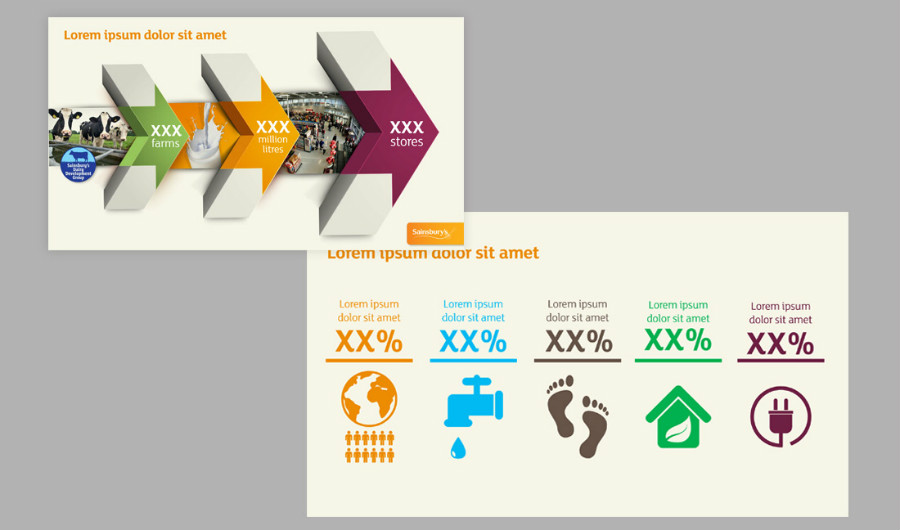If putting together presentation content wasn’t tough enough, a script also has to be written for, or by, the speaker. Learning how to write a presentation script can take some time to master, and just like a presentation design, there are some important rules to remember.
From putting together a storyboard and ensuring the words complement the slides, to inserting pause breaks and not sounding too scripted, delivering a presentation speech is a skill that needs to be honed. In this article, we will help you with all of that and more, so you can learn how to write a presentation script your audience will easily connect with.
1. Finalise the storyboarding
Planning is everything when it comes to writing a script for a presentation. In order to make the content flow naturally, a speaker needs to be well-prepared with enough time ahead of the event for them to practise.
In order to achieve great presentation content, clear and concise storyboarding needs to be the first step. This is especially true in situations where the same person is writing the script and also putting together the design. It can be tempting to write the content first before attempting to retrofit the design elements so it matches the script.
However, following this method rarely ever works, and it only serves to increase frustration and stress levels. By using a storyboard it becomes much easier to plan the length of the presentation along with its content. It also creates a guideline that will enable the speaker to direct the audience from start to finish.
2. Stick to the slide content
A key point to remember is that the content of your slides must provide the foundation of your script. When you sit down to begin writing it can be easy to follow the flow of ideas to create a script that reads wonderfully on its own. What you can’t forget is this must tie directly into the presentation content you have already storyboarded.
Writing a script for a presentation that doesn’t match the content will leave the audience feeling confused. As the script starts wandering off into tangents that do not relate to the slides, the crowd will quickly lose their place and their concentration will soon follow.
An easy way around this is to write the script with the presentation content close to hand. Break down the words into sections that reflect the order of the slides so the two are always complementing each other perfectly.
3. Remember to add in some pause breaks
When an audience attends a presentation they have two tasks to juggle: firstly, to digest the words being delivered by the speaker, and secondly, to understand the information provided by the presentation content.
It’s important to place yourself in the shoes of the audience to remember this when writing a script for a presentation. You want as much of the information you are providing to be taken in by the audience, which means you need to factor in some time that will enable them to process your words and the visual data.
Writing pause breaks into the script plays a key role in achieving this. When the speaker pauses it gives the audience a moment to reflect on what has just been said. It also allows the speaker to create a rhythm of speech and have more control over the attention of the audience from start to finish.



4. Write, practice, iterate and repeat
Once you have your script ready to go, you will need to set aside a good amount of time to practice it. Don’t forget, the script is one half of the content you will be delivering to the audience, so you should always practice the material alongside the finalised slides, as this gives you a better feel for how it all comes together.
This also allows you to make final tweaks and changes to the script, as well as physically practicing how you will deliver it on the day. You can then rehearse the way you stand, your eye contact and the management of your overall body language in front of an audience.
It is also worth remembering that when you write a script for a presentation, it will be written more formally compared to the way you naturally speak. If the script isn’t changed to reflect this, it will sound unnatural and awkward and the audience will pick up on it very quickly.
5. Remember, You don’t always need to write a script
Please note that this final point isn’t intended to undermine everything we have talked about above! As we mentioned in the previous point, sometimes writing every word you are going to say can sound overly scripted, which can lack empathy and struggle to connect with the audience.
If you are experienced and confident enough, or if it fits the type of audience you will be speaking to, you can work around key points you have written down, or simply use the slide content as your start point.
This usually suits a more informal setting and you always have to be careful not to wander off on long tangents that will lose the audience in the process. Always remember the structure of your presentation and have a time limit so you will still deliver the information concisely and effectively.
Script writing is no easy task!
Just like creating content for your presentation, writing a script requires practice. With each one you write you will gain more confidence and improve the way they are structured and delivered. Use the guidelines above as a foundation for your scripts and you’ll soon be able to find a voice and style that will add real value to your presentations.








